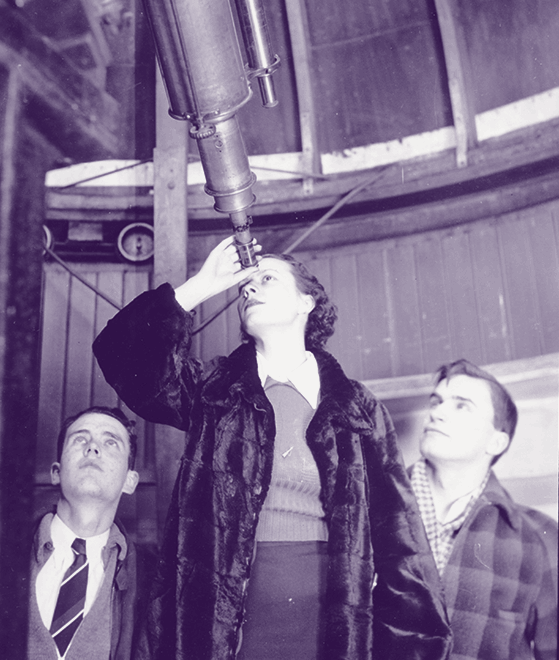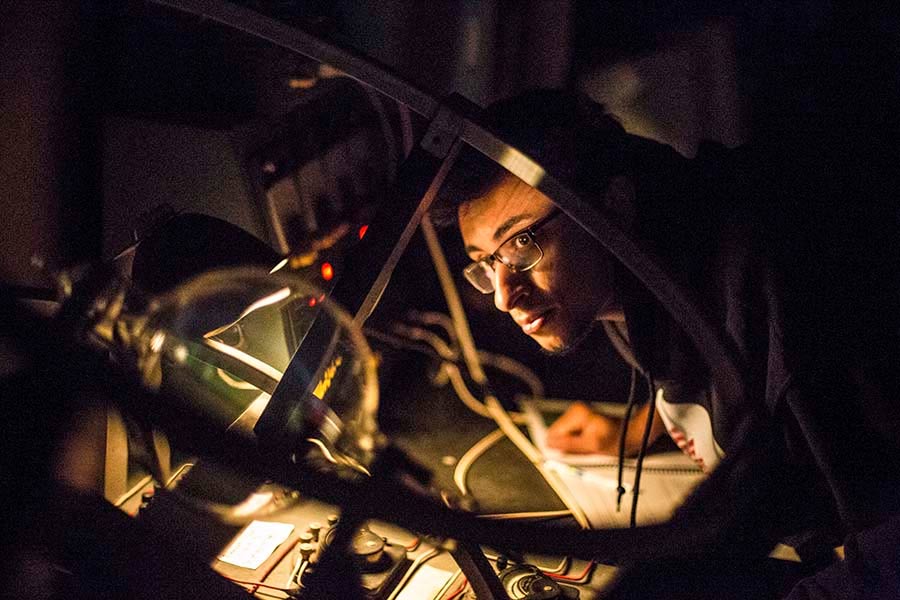

Extragalactic Astrophysics: Dark Matter, Big Bang, and More
by Elise Goitia '18
Students taking Extragalactic Astrophysics (PHYS 317) this term at Knox are discovering what lies beyond the simple observation of the universe. Led by Assistant Professor of Physics Nathalie Haurberg '06, the class is looking at how underlying physics governs what happens beyond our galaxy.
"Astronomy as a whole is oftentimes based on what we can actually observe," Haurberg said. "For example, if you think about a star, we observe the outer layers of a star. We can talk a lot about what they are and why they are that way, but astrophysics looks at the physics actually happening inside the star."
To break down the title of the class, "extragalactic," said Haurberg, "means 'beyond our galaxy,' while 'astrophysics' refers to the study of the physics that govern astronomical objects." Some of the topics studied during the term include the formation and evolution of galaxies, dark matter, big bang cosmology, and general relativity.
"It's definitely an interesting class," said student Danny Andreev '18. "It adds a lot to the physics curriculum because it really lets students use what they learned in more theoretical physics classes to understand what they observe. For example, harmonic oscillators translate to spiral waves in the galaxy."
"It's fascinating to me to have a better understanding of how the universe works," he added.
Pictured above: A student measures the charge-mass ratio of the electron in the course Modern Physics.
Haurberg's goal for the class is to show students how the physics principles they've learned apply to the universe beyond earth so that they can understand it at a deeper level.
"A lot of work you do in physics classes is applicable in astrophysics because you could encounter every situation possible by studying the universe," she said. "You can calculate things like the average temperature of gas in the Milky Way galaxy. It seems super complicated, but with just a little bit of knowledge about the galaxy, the calculation isn't that hard."
"I want students to come away with the tools to pursue other questions they're interested in. Whether they go on to graduate school or into a totally different field, they'll still be reading about it, and have those tools that they'll use later on."
Along with The Search for Extraterrestrial Life (PHYS 161), Astronomy (PHYS 167), and Observational Astronomy (PHYS 245), Extragalactic Astrophysics is part of a new course curriculum developed for the astronomy minor that was added to the curriculum in 2016.
"If you paired a physics major with an astronomy minor, you have what looks like an astrophysics major at a big school," said Haurberg. "We basically created a path where, if students are willing to put in the time, they come away with an education that's uncommon."
Published on February 21, 2017


